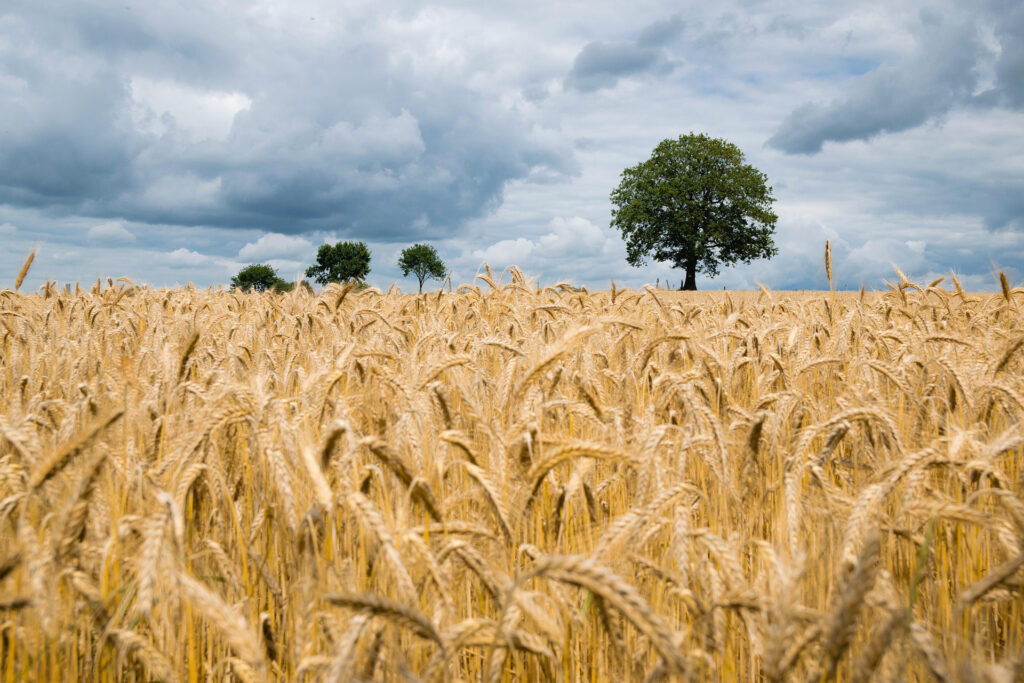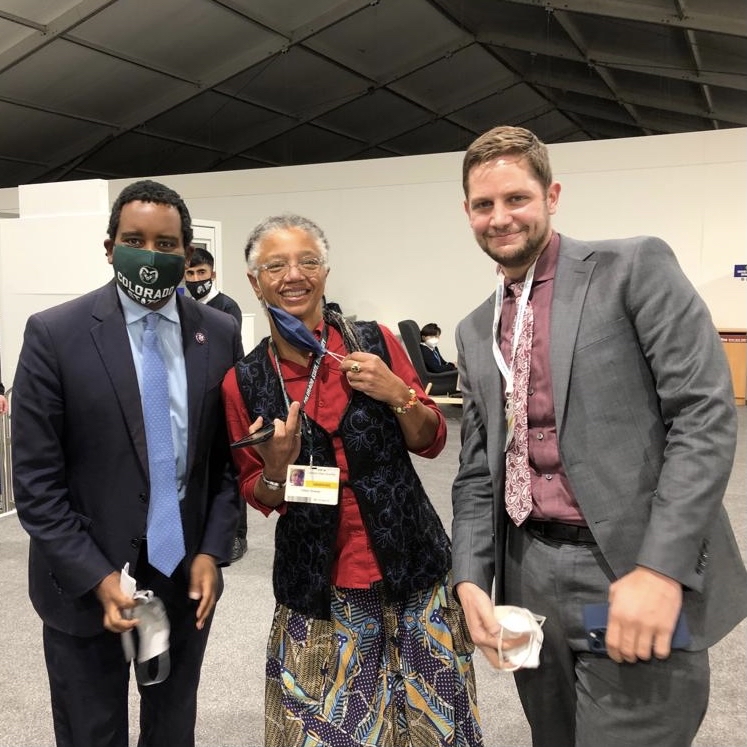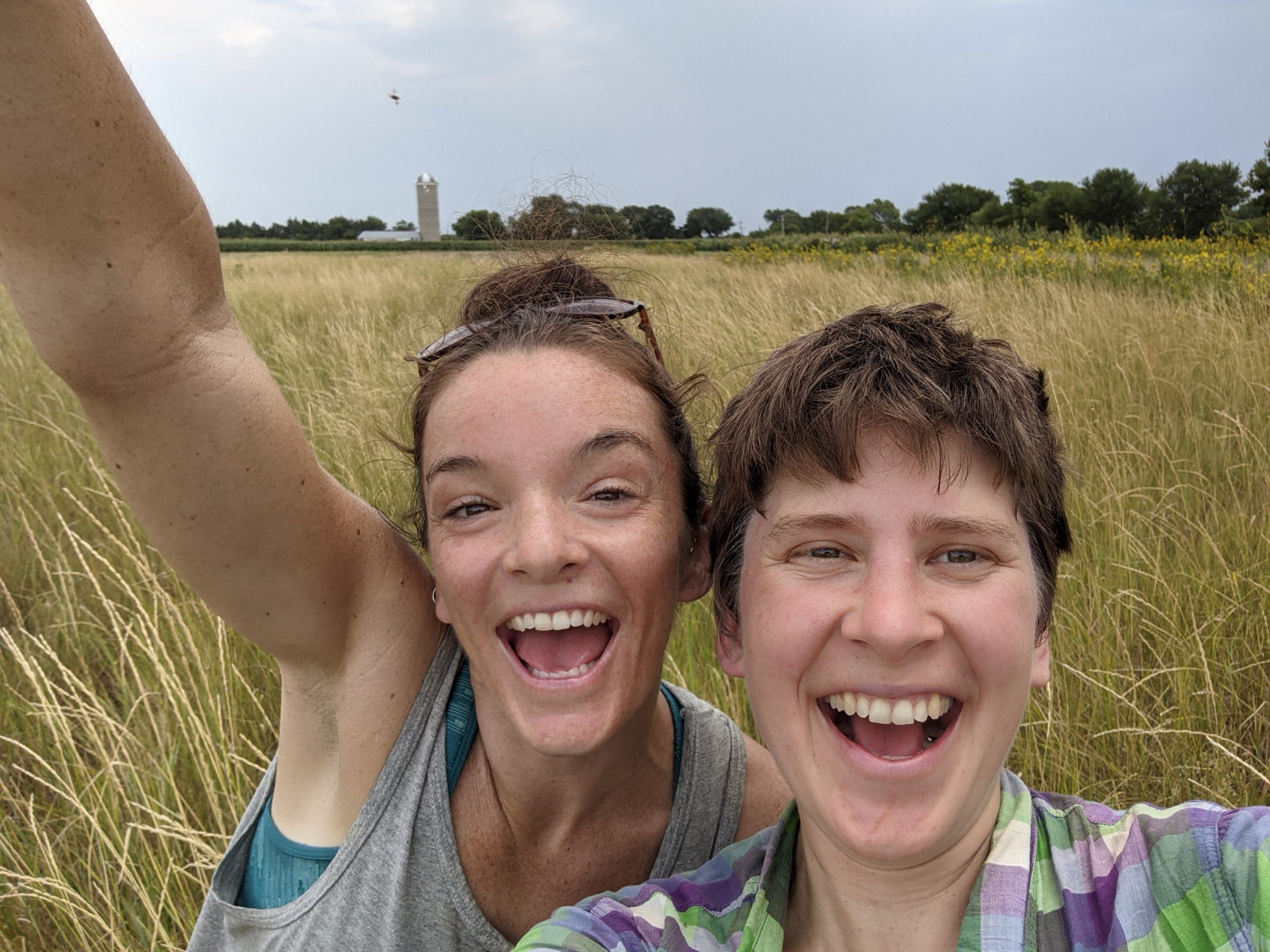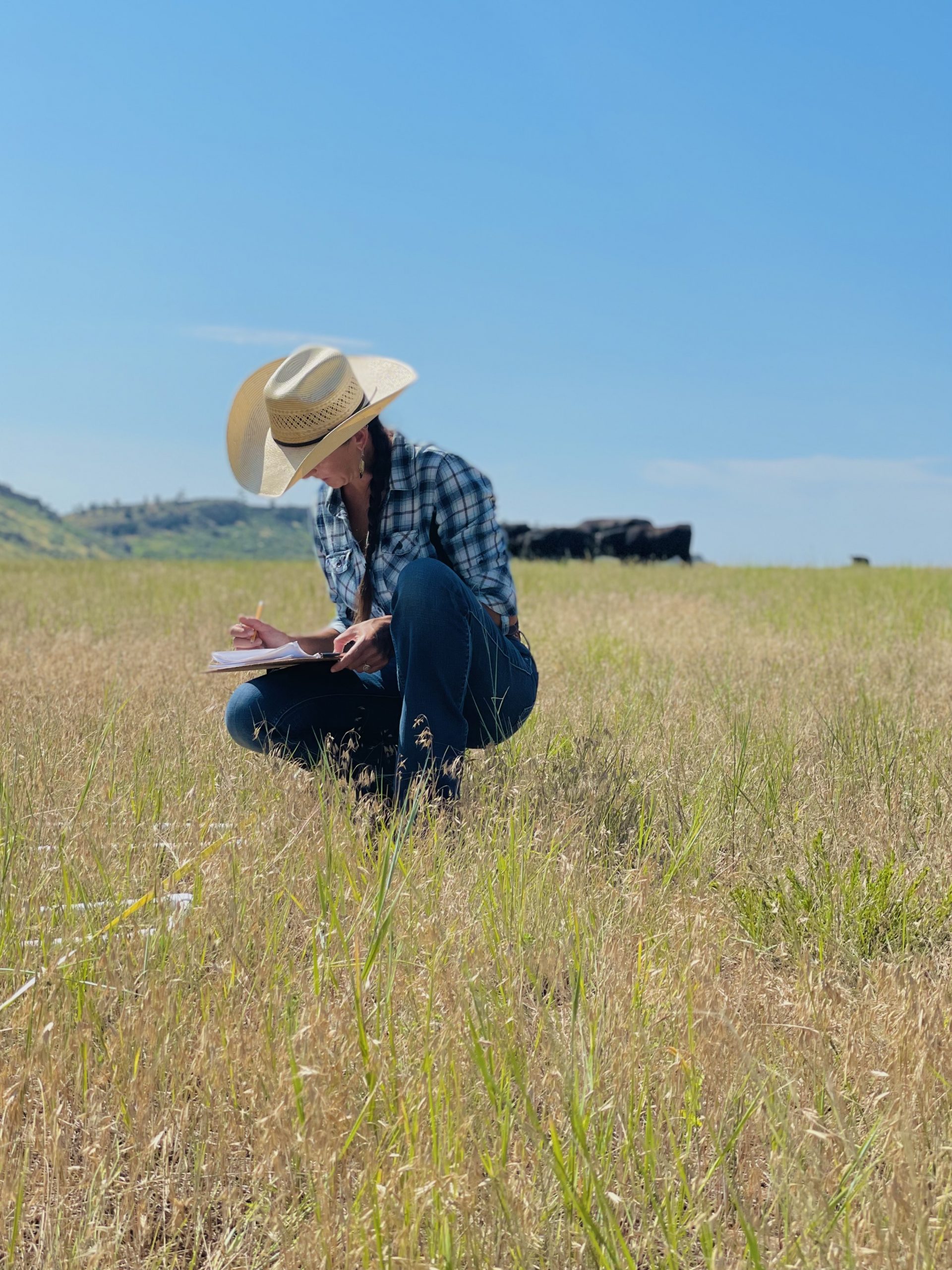Climate change is the principle environmental challenge of this century. Increasing atmospheric concentrations of greenhouse gases since the industrial revolution and the resulting climatic changes impact all of earth’s systems: forests, oceans, grasslands, the water cycle, agriculture, biodiversity, and human health and security.
Greater atmospheric concentrations of greenhouse gases and the consequential
climatic changes
will be the greatest environmental challenge of the 21st century.
The Climate Change Challenge
The food, fuel, fiber and energy demands of an expanding population have increased the release of gases into the atmosphere that act like the plastic covering of a greenhouse, radiating heat back to the earth’s surface. This warming drives many other climate features, such as the timing and amount of precipitation and snowmelt, the length of forest growth and fire seasons, and the frequency and severity of storms. Increasing carbon dioxide (CO2) can also directly affect plant growth. Climate change research interacts with everything that we do at NREL, including ecosystem management, sustainable development, and food and water security, creating huge challenges for agriculture, forestry, and other ecosystem services. Slowing the pace of climate change, preventing the worst expected impacts, and adapting to changes that cannot be prevented are the most significant environmental management challenges society has faced, requiring new levels of investment in integrated, interdisciplinary research. By contributing to national and global greenhouse gas monitoring, studying the impacts of climate change on grassland, forest, and arctic ecosystems, and investigating new ways to educate land and resource managers across the US and the world, NREL is tackling climate change methodically and pragmatically.
NREL scientists contribute substantially to understanding the impacts of climate change through their research and have been recognized by their peers and other organizations for their efforts. In 2007, Drs. Keith Paustian, Stephen Ogle, Kathleen Galvin and Dennis Ojima were acknowledged for their contributions to the Intergovernmental Panel on Climate Change (IPCC) that was awarded the 2007 Nobel Peace Prize. Below are some highlights of ongoing climate change research at NREL.
Agriculture and greenhouse gas emissions
The future of greenhouse gas management lies in accurate and consistent measurement of the stocks and flows of carbon dioxide (CO2), nitrous oxide (N2O), and other greenhouse gases from agriculture, forests, and other land uses. NREL scientists are leading the US in the study of agricultural greenhouse gases emissions and their potential reduction. Carbon sequestration, the capture and storage of atmospheric carbon dioxide by plants, oceans, and soil, is considered one of the least expensive options over the short term for reducing atmospheric greenhouse gas concentrations and the associated impact on the climate system. Farmland can sequester carbon on a large scale, through practices such as no-till agriculture and the addition of carbon-based soil amendments. During the late 1980s and 1990s, management decisions by agricultural producers in the US led to an increase in carbon sequestration in soils, and was facilitated by policies such as the Conservation Reserve Program, but potential remains for agriculture to capture carbon at a much greater magnitude. Future greenhouse gas sequestration rates will be shaped by farm policy, agricultural extension programs, and producer decisions about land management. In order to realize this potential, NREL is providing information and education about the stocks and flows of greenhouse gases associated with different land uses that will help steer policy and advise land managers.
Each year NREL scientists conduct a national inventory of greenhouse gas emissions and carbon sequestration on agricultural lands that isreported to the United Nations Framework Convention on Climate Change (UNFCCC). The annual assessment provides a detailed record of agricultural greenhouse gas emissions since 1990, including nitrous oxide emissions from fertilizers, methane emissions from rice cultivation, and carbon stock changes from both crop and grasslands. Leading this analysis is Dr. Stephen Ogle with NREL colleagues Drs. Keith Paustian and Bill Parton; statistician F. Jay Breidt from the Department of Statistics and Steve Del Grosso from the USDA Agricultural Research Service, who together bring their unique expertise to this comprehensive annual assessment. This greenhouse gas assessment methodology has been used to inform the Renewable Fuel Standards in the United States and to evaluate the potential to reduce agricultural greenhouse gas emissions for the US Department of Agriculture and national climate change policy makers. Together, this group of scientists have also developed one of the most sophisticated greenhouse gas accounting systems in the world, called COMET-Farm, which allows individual farmers and ranchers to estimate emissions from their operations. This accounting system is used in the US voluntary emission reduction program and, along with the associated online tool COMET-Planner, is providing land managers simple ways to forecast impacts of land-use changes. With these tools, NREL helps non-experts model complex ecological processes and manage lands more sustainably.
Arctic shrubs and soil microbes
In the Alaskan Arctic, effects of rapid climate warming are appearing across the full spectrum of ecological trophic levels. Receding sea ice and changing wildlife behavior are among the most obvious impacts, but significant changes are also occurring beneath the soil surface. Members of the The Wallenstein Lab are studying the effects of shrub expansion into the tundra. This change will alter soil carbon stocks and microbial activity in the carbon-rich Arctic soils. They have found that climate warming facilitates shrub expansion, increasing nitrogen availability and the efficiency of microbial metabolism. Together, these factors can facilitate formation of organic matter, highlighting the resilience and extraordinary carbon storage capacity of the tundra. Using field and laboratory experiments to quantify the interactions of biological, chemical, and physical controls, NREL researchers are gaining a better understanding of carbon cycles in Arctic soils and complex impacts of climatic changes.
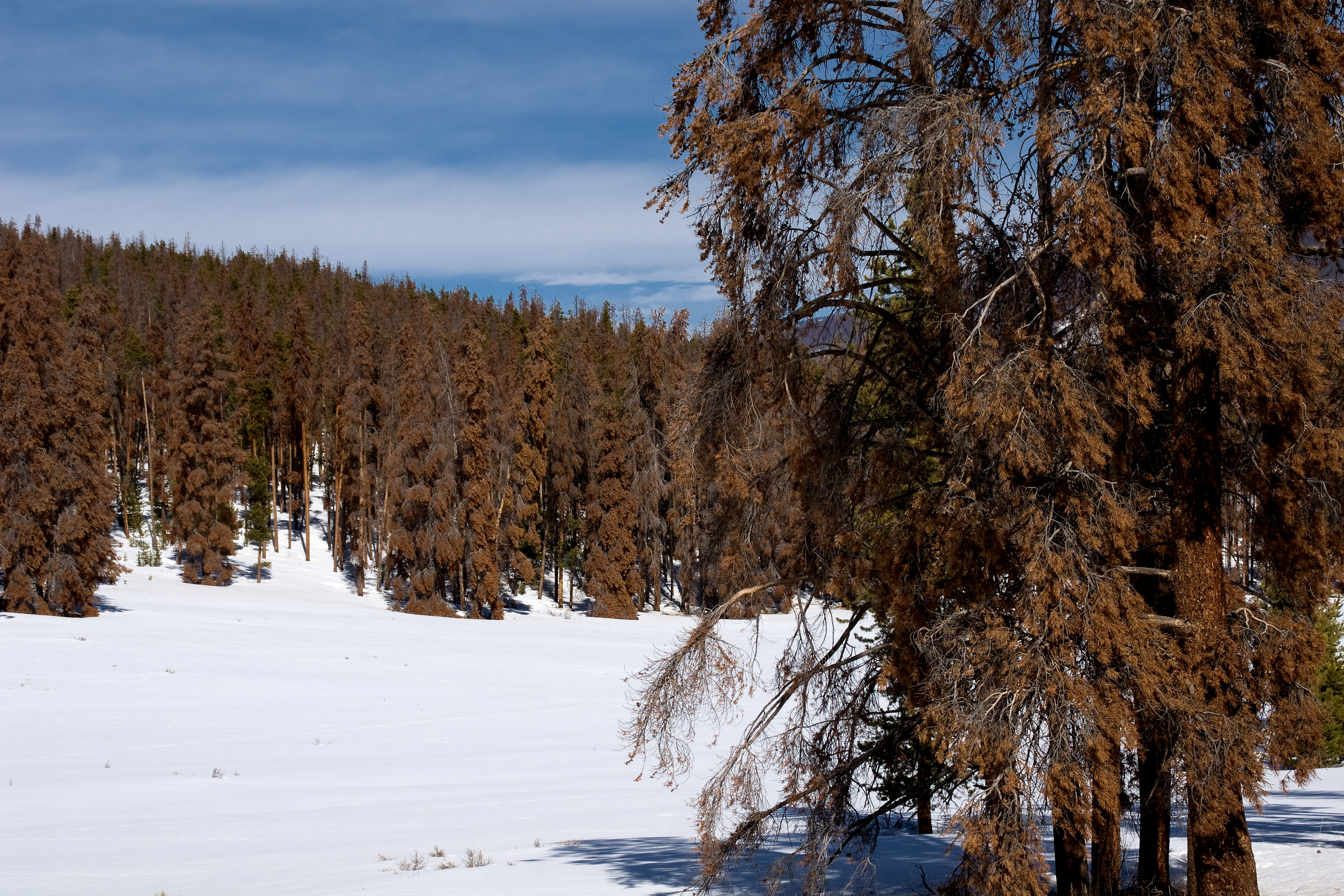
Climate change impacts on natural
and managed ecosystems
NREL scientists are studying how climate change will alter plant productivity, crop production, forest fire and regeneration, biodiversity, and species migration. For example, the USDA UV-B Monitoring and Research Program (UVMRP) aims to better understand how climate change alters ultraviolet solar radiation and changes crop dynamics. NREL has also documented the impacts of recent forest fires and insect outbreaks on forest structure, tree regeneration, and carbon storage in the southern Rocky Mountains, to help understand forest response and resilience to climate change. The Bioenergy Alliance Network of the Rockies (BANR) is taking this a step further by exploring options for using beetle-killed and other forest biomass as a bioenergy feedstock, and provide rigorous scientific underpinnings to support a sustainable regional renewable energy industry.
NREL hosted the North Central Climate Science Center, one of eight regional climate centers created by the US Department of Interior to help meet the changing needs of land and resource managers across the US, for nearly eight years. The Center brings together the latest data, tools, and knowledge on the impacts of climate change, and works directly with resource managers to promote climate-informed conservation and provides researchers an opportunity to work with an engaged and proactive applied management community.
In addition to the work with the US Department of Interior, NREL partners with the USDA Climate Hubs. The Hubs develop and deliver information and technologies to agricultural and natural resource managers to enable climate-informed decision-making, and to provide access to assistance to implement those decisions. For example, NREL provides the Northern Plains Climate Hub with information about how changing weather patterns and atmospheric C02 will impact rangeland grazing conditions so that livestock producers can adapt their practices as the climate changes.
